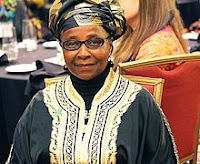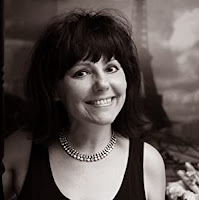A
MANUAL OF THE ART
OF FICTION
Other Books by Clayton Hamilton | |
| ON THE TRAIL OF STEVENSON | $3.50 net |
Published by Doubleday, Page & Company | |
| THE THEORY OF THE THEATRE | $1.60 net |
| STUDIES IN STAGECRAFT | $1.60 net |
| PROBLEMS OF THE PLAYWRIGHT | $1.60 net |
Published by Henry Holt & Company | |
A Manual of
THE ART OF FICTION
Prepared for the Use of Schools and Colleges
By
CLAYTON HAMILTON
Member of the National Institute of Arts
and Letters; Extension Lecturer in
English, Columbia University
With an Introduction by
BRANDER MATTHEWS
Member of the American Academy of Arts
and Letters; Professor of Dramatic
Literature, Columbia University
GARDEN CITY NEW YORK
DOUBLEDAY, PAGE & COMPANY
1919
(eText)
FOREWORD BY OLIVIA SALTER
In the vast realm of literature, few art forms capture the human imagination quite like the art of fiction. From ancient epics to modern novels, stories have the power to transport us to vibrant worlds, ignite our emotions, and explore the depths of the human experience. Fiction as an art is a boundless realm of creativity where writers weave intricate tales that bring characters to life and provoke thought-provoking discussions.
As readers, we often find ourselves engrossed in the enchanting realms constructed by talented authors, perched on the edges of our seats as we journey through their vivid narratives. But what about those who aspire to undertake the craft of storytelling themselves? How does one harness the elusive techniques and unravel the secrets of the art of fiction?
It is with great pleasure that I introduce this timeless treasure, "A Manual of the Art of Fiction" by Clayton Meeker Hamilton. Born out of his profound love for literature and his ardent dedication to the craft, Hamilton's manual serves as a beacon of guidance for individuals seeking to embark on the writer's journey or seasoned writers looking to refine their skills.
Hamilton's expertise as both a writer and an esteemed professor of literature shines through in every chapter as he effortlessly dissects the intricacies of fiction writing and imparts invaluable wisdom to his readers. With each page, he unravels the layers of storytelling, delving into the crucial elements such as plot, character development, setting, and point of view.
What truly makes "A Manual of the Art of Fiction" stand out is its comprehensive and practical approach. Hamilton not only elucidates the theoretical aspects of the craft but also provides practical exercises and examples that encourage readers to actively apply the principles discussed. By doing so, he fosters a meticulous understanding of the art form and guides aspiring authors to hone their skills through hands-on practice.
Furthermore, Hamilton's manual transcends the boundaries of time and place. Although initially published many decades ago, the principles espoused within these pages remain as relevant and impactful as ever. Aspiring writers will discover universal truths about storytelling, understanding human nature, and breathing life into their characters that will stand the test of time.
It is fair to say that "A Manual of the Art of Fiction" is not just a book but a mentor and a companion, offering guidance and inspiration throughout one's literary journey. Clayton Meeker Hamilton deftly leads readers through the varied landscapes of fiction, illuminating the paths to creativity, originality, and mastery of the craft.
Whether you are an aspiring writer yearning to begin your own literary opus, an avid reader seeking insights into the intricacies of storytelling, or a seasoned wordsmith searching for fresh inspiration, "A Manual of the Art of Fiction" will undoubtedly become an essential addition to your literary repertoire.
So, dear reader, I encourage you to pick up this manual, immerse yourself in the profound wisdom it imparts, and embark on a journey of storytelling that will forever expand your creative horizons. May it guide you through the labyrinth of fiction, ignite the spark of imagination, and help you craft worlds that will leave an indelible mark on both your readers and the annals of literary history.
Prepare to be captivated, enlightened, and inspired.
Olivia Salter
12/09/2022
CONTENTS
FOREWORD vii
INTRODUCTION xiii
I. THE PURPOSE OF FICTION 3
Fiction a Means of Telling Truth—Fact and Fiction—Truth and Fact—The Search for Truth—The Necessary Triple Process—Different Degrees of Emphasis—The Art of Fiction and the Craft of Chemistry—Fiction and Reality—Fiction and History—Fiction and Biography—Biography, History, and Fiction—Fiction Which Is True—Fiction Which Is False—Casual Sins against the Truth in Fiction—More Serious Sins against the Truth—The Futility of the Adventitious—The Independence of Created Characters—Fiction More True Than a Casual Report of Fact—The Exception and the Law—Truthfulness the only Title to Immortality—Morality and Immorality in Fiction—The Faculty of Wisdom—Wisdom and Technic—General and Particular Experience—Extensive and Intensive Experience—The Experiencing Nature—Curiosity and Sympathy.
II. REALISM AND ROMANCE 25
Two Methods of Exhibiting the Truth—Every Mind Either Realistic or Romantic—Marion Crawford's Faulty Distinction—A Second Unsatisfactory Distinction—A Third Unsatisfactory Distinction—Bliss Perry's Negative Definition—The True Distinction One of Method, Not of Material—Scientific Discovery and Artistic Expression—The Testimony of Hawthorne—A Philosophic Formula—Induction and Deduction—The Inductive Method of the Realist—The Deductive Method of the Romantic—Realism, Like Inductive Science, a Strictly Modern Product—Advantages of Realism—Advantages of Romance—The Confinement of Realism—The Freedom of Romance—Neither Method Better Than the Other—Abuses of Realism—Abuses of Romance.
III. THE NATURE OF NARRATIVE 44
Transition from Material to Method—The Four Methods of Discourse—1. Argumentation; 2. Exposition; 3. Description; 4. Narration, the Natural Mood of Fiction—Series and Succession—Life Is Chronological, Art Is Logical—The Narrative Sense—The Joy of Telling Tales—The Missing of This Joy—Developing the Sense of Narrative—The Meaning of the Word ``Event''—How to Make Things Happen—The Narrative of Action—The Narrative of Character—Recapitulation.
IV. PLOT 60
Narrative a Simplification of Life—Unity in Narrative—A Definite Objective Point—Construction, Analytic and Synthetic—The Importance of Structure—Elementary Narrative—Positive and Negative Events—The Picaresque Pattern—Definition of Plot—Complication of the Network—The Major Knot—``Beginning, Middle, and End''—The Sub-Plot—Discursive and Compacted Narratives—Telling Much or Little of a Story—Where to Begin a Story—Logical Sequence and Chronological Succession—Tying and Untying—Transition to the Next Chapter.
V. CHARACTERS 77
Characters Should Be Worth Knowing—The Personal Equation of the Audience—The Universal Appeal of Great Fictitious Characters—Typical Traits—Individual Traits—The Defect of Allegory—The Defect of Caricature—Static and Kinetic Characters—Direct and Indirect Delineation—Subdivisions of Both Methods—I. Direct Delineation: 1. By Exposition; 2. By Description; [Gradual Portrayal]; 3. By Psychological Analysis; 4. By Reports from other Characters—II. Indirect Delineation: 1. By Speech; 2. By Action; 3. By Effect on other Characters; 4. By Environment.
VI. SETTING 99
Evolution of Background in the History of Painting—The First Stage—The Second Stage—The Third Stage—Similar Evolution of Setting in the History of Fiction: The First Stage—The Second Stage—The Third Stage: 1. Setting as an Aid to Action—2. Setting as an Aid to Characterization—Emotional Harmony in Setting—The Pathetic Fallacy—Emotional Contrast in Setting—Irony in Setting—Artistic and Philosophical Employment—1. Setting as a Motive toward Action—2. Setting as an Influence on Character—Setting as the Hero of the Narrative—Uses of the Weather—Romantic and Realistic Settings—A Romantic Setting by Edgar Allan Poe—A Realistic Setting by George Eliot—The Quality of Atmosphere, or Local Color—Recapitulation.
VII. THE POINT OF VIEW IN NARRATIVE 120
The Importance of the Point of View—Two Classes, The Internal and the External—I. Subdivisions of the First Class: 1. The Point of View of the Leading Actor; 2. The Point of View of Some Subsidiary Actor; 3. The Points of View of Different Actors; 4. The Epistolary Point of View.—II. Subdivisions of the Second Class:—1. The Omniscient Point of View; 2. The Limited Point of View; 3. The Rigidly Restricted Point of View—Two Tones of Narrative, Impersonal and Personal: 1. The Impersonal Tone; 2. The Personal Tone—The Point of View as a Factor in Construction—The Point of View as the Hero of the Narrative.
VIII. EMPHASIS IN NARRATIVE 139
Essential and Contributory Features—Art Distinguishes Between the Two by Emphasis—Many Technical Devices: 1. Emphasis by Terminal Position; 2. Emphasis by Initial Position; 3. Emphasis by Pause [Further Discussion of Emphasis by Position]; 4. Emphasis by Direct Proportion; 5. Emphasis by Inverse Proportion; 6. Emphasis by Iteration; 7. Emphasis by Antithesis; 8. Emphasis by Climax; 9. Emphasis by Surprise; 10. Emphasis by Suspense; 11. Emphasis by Imitative Movement.
IX. THE EPIC, THE DRAMA, AND THE NOVEL 157
Fiction a Generic Term—Narrative in Verse and Narrative in Prose—Three Moods of Fiction: I. The Epic Mood—II. The Dramatic Mood: 1. Influence of the Actor; 2. Influence of the Theatre; 3. Influence of the Audience—[Dramatized Novels]—III. The Novelistic Mood.
X. THE NOVEL, THE NOVELETTE, AND THE SHORT-STORY 172
Novel, Novelette, and Short-Story—The Novel and the Novelette—The Short-Story a Distinct Type—The Dictum of Poe—The Formula of Brander Matthews—Definition of the Short-Story—Explanation of This Definition: 1. ``Single Narrative Effect''; 2. ``Greatest Economy of Means''; and 3. ``Utmost Emphasis''—Brief Tales That Are Not Short-Stories—Short-Stories That Are Not Brief—Bliss Perry's Annotations—The Novelist and the Writer of Short-Stories—The Short-Story More Artistic Than the Novel—The Short-Story Almost Necessarily Romantic.
XI. THE STRUCTURE OF THE SHORT-STORY 189
Only One Best Way to Construct a Short-Story—Problems of Short-Story Construction—The Initial Position—The Terminal Position—Poe's Analysis of ``The Raven''—Analysis of ``Ligeia''—Analysis of ``The Prodigal Son''—Style Essential to the Short-Story.
XII. THE FACTOR OF STYLE 207
Structure and Style—Style a Matter of Feeling—Style an Absolute Quality—The Twofold Appeal of Language—Concrete Examples—Onomatopoetic Words—Memorable Words—The Patterning of Syllables—Stevenson on Style—The Pattern of Rhythm—The Pattern of Literation—Style a Fine Art—Style an Important Aid to Fiction—The Heresy of the Accidental—Style an Intuitive Quality—Methods and Materials—Content and Form—The Fusion of Both Elements—The Author's Personality—Recapitulation.
INDEX 227
Also see:
The PDF might take a minute to load. Or, click to download PDF.
If your Web browser is not configured to display PDF files. No worries, just click here to download the PDF file.











.jpg)
